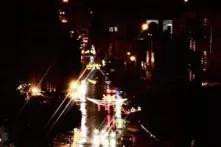"Takhayal [Imagine] Ramallah"
Is contributions that combine text and visual components that focus on collective, communal, and critical approaches towards a radical reconfiguration of, and relationship to, time and space.
Taking Ramallah and other cities in the West Bank as a point of departure, understanding the current political stagnation, sharp economic inequalities, strangulation of productive sectors, and the building boom of the last fifteen years that challenges capacities of cities and natural sites to cope with expansion and pollution; from this perspective, we aimed to highlight concepts that address one or more of the following questions through spatial re-imagination of a particular chosen site:
- In what ways can community initiatives and visionary activists help reshape Palestinian cities to be more ecologically sound and resilient?
- What kind of city-spaces are needed to nurture a community capable of facing and forging solutions for ecological, political, social, and economic crises?
- What is the role of architects, planners, artists, educators, and community activists in triggering collective imaginations and public momentum to shift to alternative modes of urbanisation that are equitable and ecological?
One could say that in Palestine we live through scaled shocks, where the colonial reality and dominant economic sectors (real estate, extraction, consumption) are thriving through systematic destruction of cultural landscapes, natural resources, societal fabrics, and exacerbating uncertainties and precarious realities. Nonetheless, community campaigns have succeeded. For example, the town of Anabta was able to halt the establishment of a cement factory on their agricultural lands. In Wadi Jaryout in Beitounia, the community was able to stop the transformation of the naturally rich valley into a sewer dumping site, among other examples.
That said, to create healthier and more resilient habitats that are able to counter disenfranchisement that utilises colonialism, disaster situations or scaled shocks, we need to develop communal cross-sectoral systems for risk reduction and early response mechanisms that benefit from the wealth of knowledge within our communities, ancestral heritage, and natural resources. This hinges on the ability to imagine alternative scenarios and open the discussion beyond niche-circles, which is what we aimed with this the below Takhayulat.
"Takhayal Ramallah" is a collaborative project between UR°BANA and Sakiya, with the support of the Heinrich-Böll-Stiftung - Palestine and Jordan. The views expressed herein are those of the author(s) and therefore do not necessarily reflect the opinion of the Heinrich-Böll-Stiftung.






